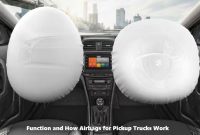Adaptive Cruise Control (ACC) is a smart system that automatically maintains a safe gap from the vehicle in front. Unlike regular cruise control, it not only maintains the chosen speed but also adjusts it as needed to slow down or speed up. This technology responds to traffic flow, making long drives smoother and reducing the need for constant braking or acceleration. ACC makes daily driving easier while also supporting road safety.

How Adaptive Cruise Control in Modern Cars Works
Here’s how cruise control works for modern cars and what makes it different from the traditional system:
1. Sensors and Detection
ACC systems use a combination of sensors such as radar, lidar, cameras, and sometimes infrared sensors, typically mounted on the front grille or windshield of the vehicle. Radar sensors are the most common due to their accuracy in measuring distance and relative speed, even in the worst conditions. The sensors constantly monitor the road to spot any cars, objects, or potential hazards in front.
2. Data Processing and Electronic Control
The Electronic Control Unit (ECU) works like the brain of the system, processing all incoming sensor information. It studies how far the vehicle in front is, checks speed differences, and evaluates potential crash risks. Based on that, the ECU instantly decides whether to slow down or speed up to keep a safe driving gap.
3. Speed and Distance Management
Once activated, the driver sets a desired cruising speed and a following gap (distance or time-based). If the sensors detect a slower vehicle ahead, the system will automatically reduce the vehicle’s speed by controlling the throttle and applying brakes as needed to maintain that gap. When the road opens up or traffic lightens, ACC will smoothly picks up speed to the set limit.
4. Stop-and-Go Capability
Most modern Adaptive Cruise Control systems can manage stop-and-go traffic with ease, making daily commutes less stressful. They slow the car down to a full stop when needed and smoothly accelerate once movement resumes, easing tension in heavy traffic.
5. Driver Interface and Control
Drivers operate ACC through controls usually located on the steering wheel. They can activate/deactivate ACC, set the speed, and adjust following distance using buttons. The system continuously monitors traffic and assists with acceleration and braking, but requires the driver to remain attentive and ready to take control.
6. Enhanced Safety and Convenience
By maintaining optimal spacing between vehicles, ACC helps prevent tailgating and reduces the risk of rear-end collisions. It also contributes to smoother traffic flow and reduces driver stress on long drives or in heavy traffic.
7. Integration with Other Systems
Advanced Adaptive Cruise Control systems often integrate with lane-keeping assist and traffic sign recognition to further enhance driving safety and comfort. Some can adjust speed based on speed limits detected via roadside signs or GPS data.
What Makes ACC Different from Standard Cruise Control
Based on @SuzukiNewZealand’s explanation on their YouTube channel, ACC is an advanced version of traditional cruise control. With standard cruise control, the car keeps moving at a fixed speed, even if traffic ahead slows down. This means that if the car encounters an obstacle or another vehicle traveling at a slower pace, the driver must manually adjust their speed or disengage cruise control to avoid a collision.
Adaptive Cruise Control, the vehicle relies on sensors and radar to spot traffic and slow down when needed. This feature provides a more relaxed driving experience, particularly in varying traffic conditions.
How AI Advancements Can Improve ACC Performance?
Advances in artificial intelligence and sensor technology are set to greatly improve Adaptive Cruise Control systems in many aspects, such as:
- Powered by artificial intelligence, predictive analytics can analyze data from radar, cameras, lidar, and infrared to better identify possible dangers in advance.
- ACC systems use machine learning to recognize and adjust to each driver’s habits, including spacing, speed, and braking.
- Future ACC systems will work more seamlessly with related technologies like lane-keeping assist, automatic emergency braking, and traffic sign recognition.
- AI can enhance ACC’s ability to handle stop-and-go conditions and react to erratic vehicle movements in heavy traffic.
Adaptive Cruise Control is seen as a key component in modern vehicle automation. This system supports level 1 or 2 autonomy based on how it’s integrated with other features. The price often varies by car model and feature set. For those who value safer, more relaxed road trips, this feature is a valuable addition to consider. /Fitri



